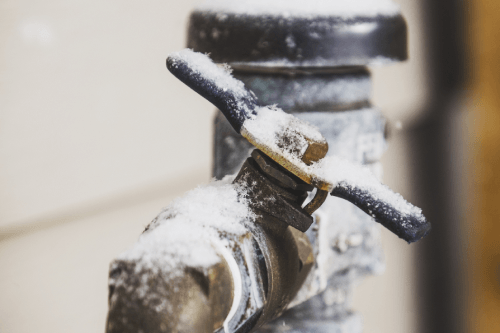Protecting Against Frozen Plumbing in Winter: Key Advice
Protecting Against Frozen Plumbing in Winter: Key Advice
Blog Article
What are your beliefs about How to prepare your home plumbing for winter weather?

Cold weather can ruin your plumbing, especially by freezing pipelines. Right here's just how to stop it from happening and what to do if it does.
Introduction
As temperatures decrease, the risk of icy pipelines rises, possibly causing expensive repair work and water damages. Comprehending exactly how to stop icy pipelines is important for house owners in cold climates.
Avoidance Tips
Insulating vulnerable pipelines
Cover pipes in insulation sleeves or utilize heat tape to protect them from freezing temperature levels. Concentrate on pipes in unheated or outside areas of the home.
Home heating strategies
Maintain interior spaces adequately heated up, especially areas with plumbing. Open up cupboard doors to enable warm air to circulate around pipelines under sinks.
Exactly how to identify icy pipelines
Search for lowered water circulation from faucets, uncommon smells or noises from pipelines, and visible frost on subjected pipes.
Long-Term Solutions
Structural changes
Take into consideration rerouting pipelines far from exterior walls or unheated locations. Add added insulation to attic rooms, cellars, and crawl spaces.
Upgrading insulation
Invest in high-quality insulation for pipelines, attic rooms, and wall surfaces. Proper insulation aids maintain regular temperature levels and decreases the threat of icy pipelines.
Securing Outdoor Pipes
Yard hose pipes and exterior taps
Detach and drain garden pipes before winter season. Mount frost-proof faucets or cover outdoor taps with shielded caps.
Recognizing Icy Pipelines
What triggers pipelines to freeze?
Pipes ice up when subjected to temperatures listed below 32 ° F (0 ° C) for prolonged durations. As water inside the pipes freezes, it broadens, taxing the pipe wall surfaces and potentially creating them to rupture.
Risks and damages
Icy pipes can cause supply of water disturbances, home damage, and pricey repair work. Burst pipelines can flood homes and cause comprehensive architectural damages.
Indications of Frozen Pipeline
Identifying icy pipes early can stop them from rupturing.
What to Do If Your Pipes Freeze
Immediate activities to take
If you think frozen pipelines, keep taps open to soothe pressure as the ice thaws. Use a hairdryer or towels taken in warm water to thaw pipes gradually.
Final thought
Protecting against frozen pipelines requires positive measures and quick feedbacks. By understanding the reasons, indicators, and preventive measures, house owners can protect their plumbing during cold weather.
5 Ways to Prevent Frozen Pipes
Drain Outdoor Faucets and Disconnect Hoses
First, close the shut-off valve that controls the flow of water in the pipe to your outdoor faucet. Then, head outside to disconnect and drain your hose and open the outdoor faucet to allow the water to completely drain out of the line. Turn off the faucet when done. Finally, head back to the shut-off valve and drain the remaining water inside the pipe into a bucket or container. Additionally, if you have a home irrigation system, you should consider hiring an expert to clear the system of water each year.
Insulate Pipes
One of the best and most cost-effective methods for preventing frozen water pipes is to wrap your pipes with insulation. This is especially important for areas in your home that aren’t exposed to heat, such as an attic. We suggest using foam sleeves, which can typically be found at your local hardware store.
Keep Heat Running at 65
Your pipes are located inside your walls, and the temperature there is much colder than the rest of the house. To prevent your pipes from freezing, The Insurance Information Institute suggests that you keep your home heated to at least 65 degrees, even when traveling. You may want to invest in smart devices that can keep an eye on the temperature in your home while you’re away.
Leave Water Dripping
Moving water — even a small trickle — can prevent ice from forming inside your pipes. When freezing temps are imminent, start a drip of water from all faucets that serve exposed pipes. Leaving a few faucets running will also help relieve pressure inside the pipes and help prevent a rupture if the water inside freezes.
Open Cupboard Doors
Warm your kitchen and bathroom pipes by opening cupboards and vanities. You should also leave your interior doors ajar to help warm air circulate evenly throughout your home.

We hope you enjoyed our topic on How To Avoid Freezing Pipes. Thanks a lot for taking the time to read our piece. If you enjoyed reading our blog entry if you please make sure you remember to pass it around. I praise you for being here. Revisit us soon.
Book Service Now Report this page